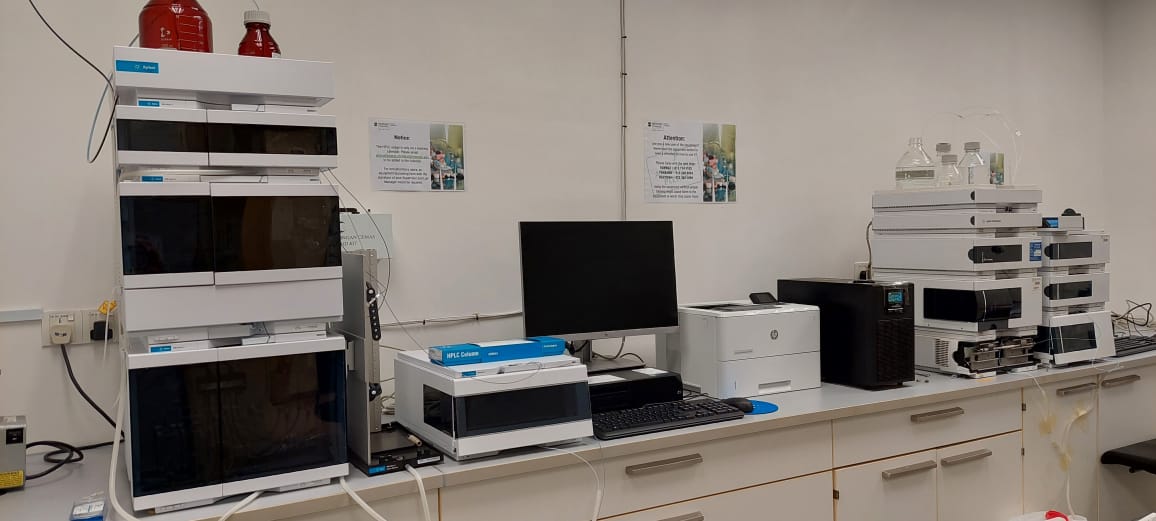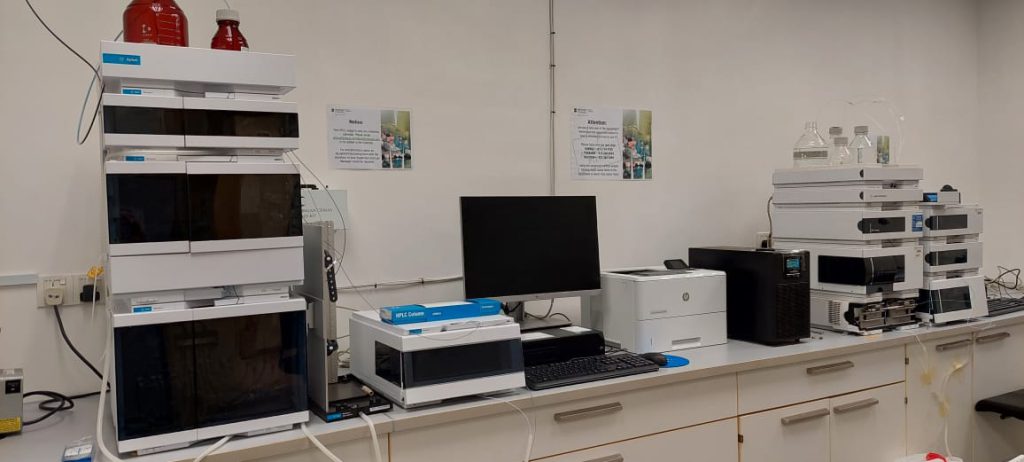HPLC – High performance liquid Chromatography
High Performance Liquid Chromatography (HPLC) is an analytical technique used to identify the components in a mixture and separate mixtures of very similar compounds. Or in simple terms HPLC is a process of separating components in a liquid mixture. Separates molecules a liquid sample is injected into a stream of solvent (mobile phase) flowing through a column packed with a separation medium (stationary phase).
Principle
Main principle of separation is Adsorption. The separation principle of HPLC is based on the distribution of the analyte (sample) between a mobile phase (eluent) and a stationary phase (packing material of the column). Depending on the chemical structure of the analyte, the molecules are retarded while passing the stationary phase.
Components of HPLC
The HPLC system mainly consists of an infusion pump, a sampler, a chromatographic column, a detector, and a data recording and processing device.
Infusion Pump – It is the important components of the HPLC. The role of the pump is to force sample through column at the specific floe rate. Normal flow rate in HPLC is 1 – 2 l/min.
Sampler or Injector – It use to inject sample (liquid). It is equipped with six-port injection valve or auto sampler is frequently used at present so that sample can be injected into the flow path at continuous pressure.
Chromatographic Column – It is separation system of HPLC. Columns are made of stainless- steel to withstand high pressure caused by the pump to move the mobile phase through the column. The small particles inside the column are called the packing. Column packing is usually silica gel because of its particle shape surface properties and pore structure give us a good separation.
Detector – The detector is a device that is used to continuously monitor the composition and content changes of the effluent separated by the chromatographic column. Commonly use Detector are UV detector, Refractive-Index Detector, Mass Spectrometer and Fluorescence Detector.
Processing device – The system can collect, store, display, print, and process test data, so that sample separation, preparation, or identification can be carried out correctly.
Applications of HPLC
Because of this versatility, HPLC is used in a variety of industrial and scientific applications, such as pharmaceutical, environmental, forensics, and chemicals.
- It is also use to the analysis of nutrients in blood and other medical samples.
- HPLC is also used for the detection of drug traces in urine.
- HPLC can also be used to identify and quantify pesticides along with preservatives and artificial flavourings and colorants.


